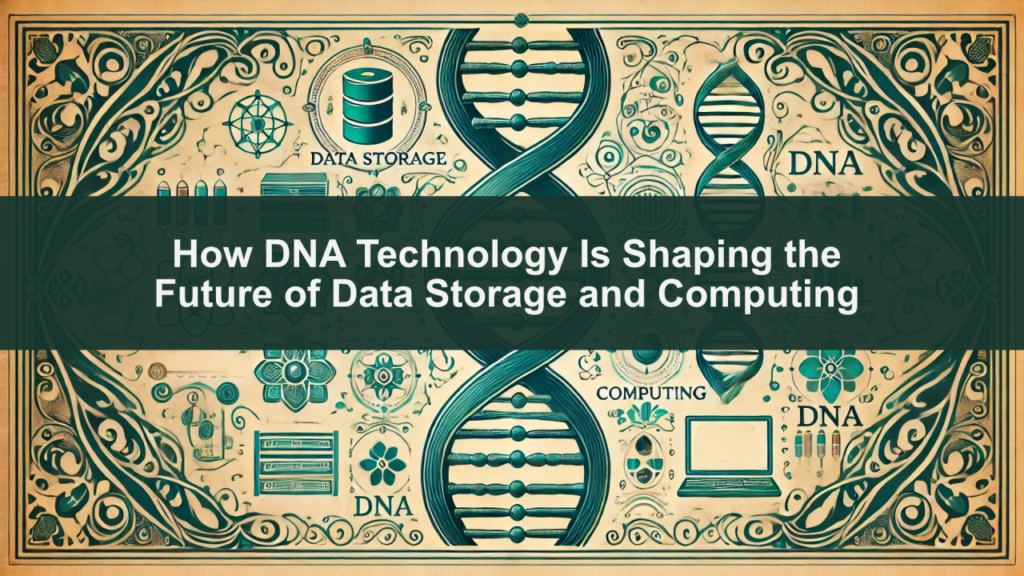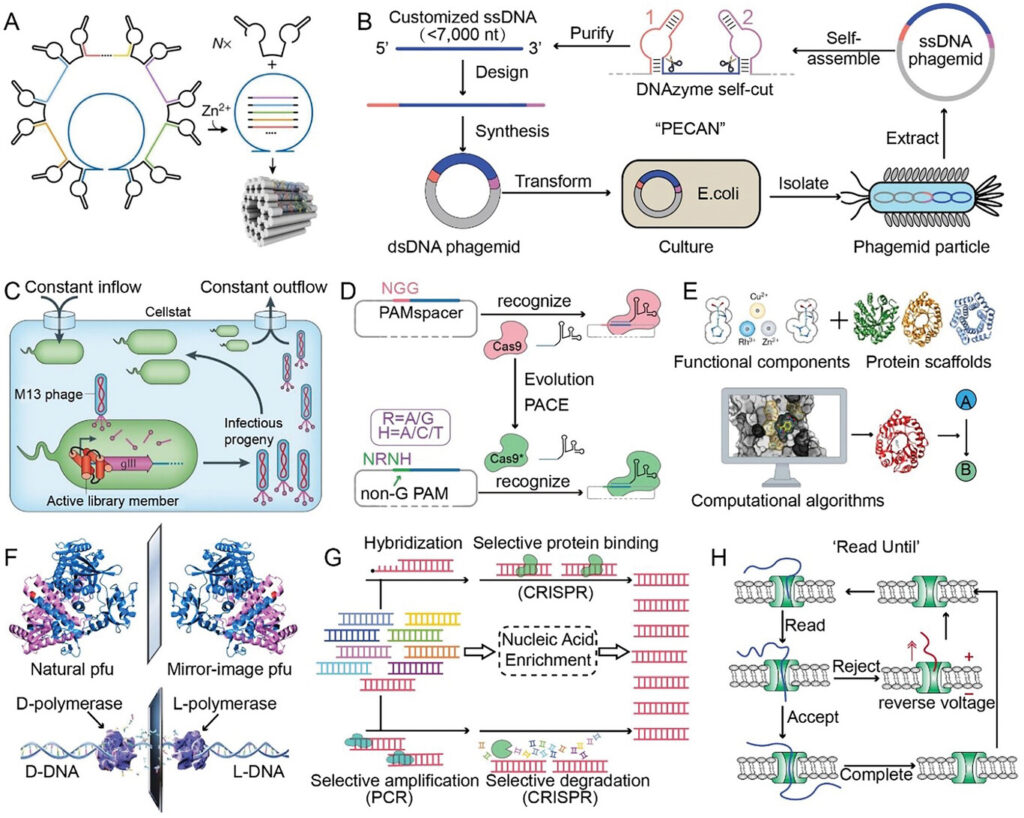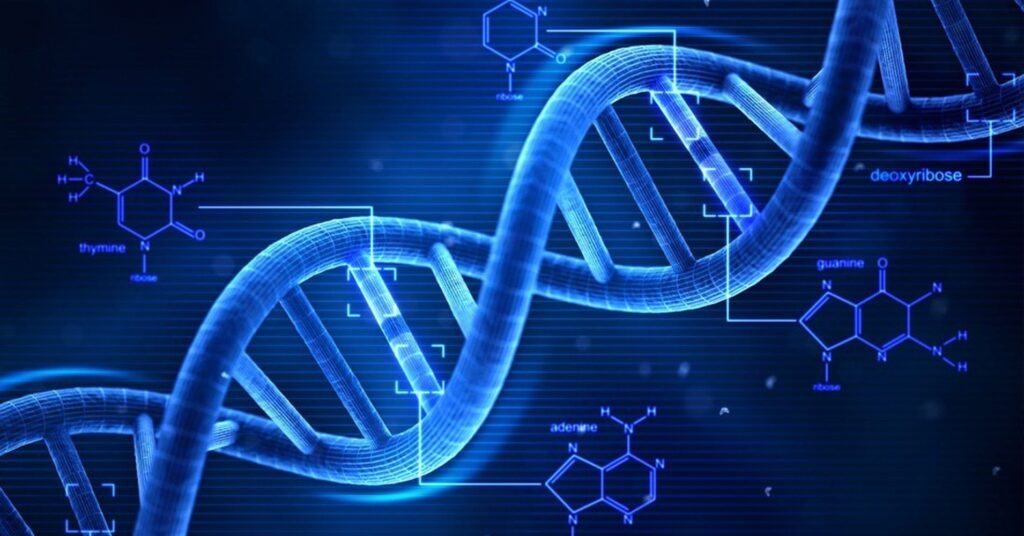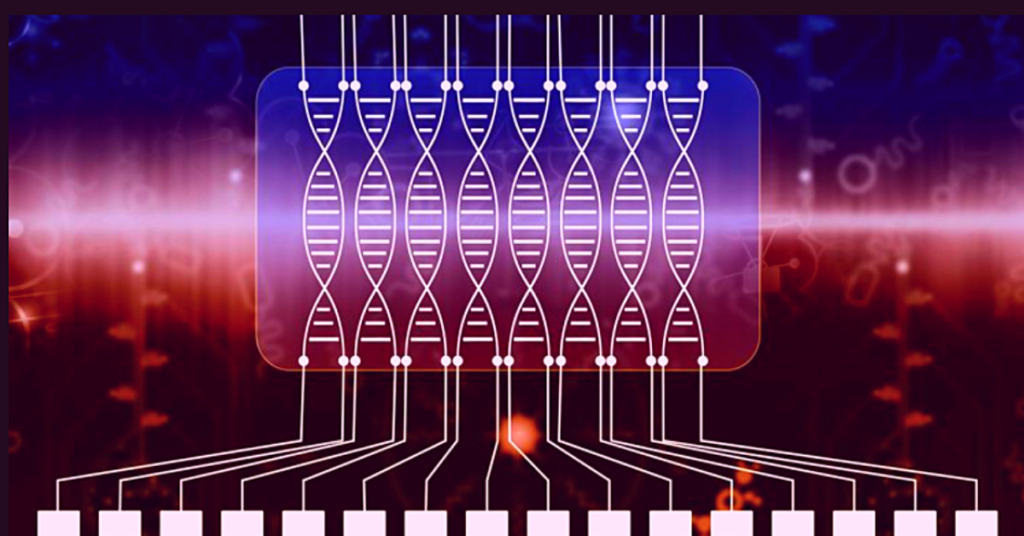DNA computing Have you heard of ? It’s an innovative technology that’s making big waves in problem-solving and gaming. DNA computing uses the unique properties of DNA molecules to solve complex problems and create highly efficient algorithms. Let’s explore how this groundbreaking technology is changing the game for problem-solving and gaming.
1. DNA computing is an emerging field that utilizes the incredible information storage capacity of DNA molecules to perform computational tasks.
DNA computing is an emerging field that utilizes the storage capacity of DNA molecules to perform computational tasks. This breakthrough has the potential to greatly impact computing and data storage, as can store vast amounts of information in a compact space. Scientists are currently investigating the use of for complex problem solving, data storage, and other computational tasks. This area of study is quickly advancing and holds significant promise for the future of technology.
This technology has the potential to revolutionize the way we approach complex computational problems, offering a level of storage and processing power that exceeds current capabilities. As scientists delve deeper into the possibilities we can look forward to exciting advancements in areas such as data storage, cryptography, and bioinformatics.

DNA computing is an emerging and rapidly expanding area of technology that harnesses the vast data storage potential of DNA molecules to perform computational tasks. This innovative approach has the power to revolutionize computing by allowing for the processing and storage of large amounts of data within a small space. As research in this field continues to advance, it holds promise for addressing complex problems that are currently beyond the capabilities of traditional computers.
2. DNA computing works by encoding information in DNA sequences and using biological processes, such as DNA replication and transcription, to manipulate and process the data.
DNA computing is an innovative method of information processing that uses DNA sequences and biological processes to handle and analyze data. By storing information in DNA and utilizing processes like DNA replication and transcription offers a new and creative approach to solving complex computational problems. This emerging field has the potential to revolutionize computing and has important implications for industries like medicine and data storage.
An advanced technology that utilizes DNA sequences to encode information and harnesses biological processes like DNA replication and transcription to manipulate and process data. This method has the potential to transform computing by tapping into the vast storage capacity and parallel processing capabilities of DNA. As scientists further develop this technology, we can expect significant advancements in computing and data storage in the future.

DNA computing is an exciting new method that uses DNA sequences to encode and process data, taking advantage of biological processes like DNA replication and transcription to carry out computational tasks. This approach has the potential to completely change the way we think about computing, providing a fresh way to store and manipulate information.
3. DNA computing has applications in problem-solving, such as solving optimisation problems and simulating biological processes.
DNA computing has a diverse range of uses, including problem-solving. A key area in which can be utilized is in tackling optimisation problems and simulating biological processes. DNA’s exceptional parallel processing capabilities make it an ideal choice for solving complex problems and modelling intricate biological systems. As the field of DNA computing progresses, the potential for using DNA as a powerful tool for problem-solving will only increase.
DNA computing has the potential to greatly impact problem-solving across multiple industries. One important application is in solving optimisation problems, where the vast parallelism of DNA strands can be utilized to efficiently explore numerous potential solutions. Furthermore, can also be applied to simulate biological processes, offering valuable insights into intricate biological systems. As scientists delve further into the possibilities of , its role in problem-solving is anticipated to expand even further.

DNA computing is a cutting-edge technology with a wide range of applications, including problem-solving, optimization, and simulating biological processes. This innovative technology has the potential to revolutionize the way we approach complex problem-solving tasks and has already demonstrated promise in various fields.
DNA computing is an advanced technology with a wide range of applications, including problem-solving. One important application is in solving optimization problems, where DNA’s extensive parallel processing capabilities can be utilized to find the best solutions. Additionally, DNA computing can also be used to simulate biological processes, providing a valuable tool for researchers and scientists. With its potential to transform problem-solving in different fields, DNA computing holds a lot of promise for the future.
4. In gaming, DNA computing can be used for creating complex puzzles and challenges that require bioinformatics and computational biology skills.
DNA computing is an intriguing and cutting-edge technique for developing intricate puzzles and challenges within the gaming industry. By leveraging bioinformatics and computational biology expertise, game developers can craft distinctive and captivating experiences for players. This innovative approach introduces a new level of depth to gaming and has the potential to appeal to a specialized audience with interests in both gaming and scientific disciplines.
DNA computing has become an intriguing and innovative application within the gaming industry. Game designers are utilizing bioinformatics and computational biology skills to develop intricate puzzles and challenges, providing players with a one-of-a-kind and captivating experience. This blend of science and entertainment is paving the way for new opportunities in the gaming industry and showcasing the potential of DNA computing across various fields.
DNA computing in gaming provides a new and inventive way to design intricate puzzles and challenges that require bioinformatics and computational biology skills. This can enhance the immersive and intellectually stimulating experience for players. Additionally, it creates opportunities for educational games that make learning bioinformatics and computational biology enjoyable and engaging.
DNA computing has the potential to be integrated into gaming to create complex puzzles and challenges that require a deep understanding of bioinformatics and computational biology. This can offer a unique and engaging experience for gamers who enjoy solving intricate problems and applying their scientific knowledge. By incorporating into gaming, it opens up new possibilities for creating immersive and intellectually stimulating gameplay.
5. The advantages of DNA computing include its massive parallelism and potential for ultra-high-density data storage, but challenges include error rates and high cost.
DNA computing has many advantages, including its ability to perform massive parallelism and potential for ultra-high-density data storage, making it an attractive choice for certain computational tasks. However, there are also challenges to consider, such as high error rates and cost. It is crucial to carefully evaluate these pros and cons when considering the use of specific applications.such as the ability for massive parallelism and the potential for ultra-high-density data storage. However, it also comes with challenges like error rates and high costs. It’s important to carefully consider both the benefits and drawbacks when evaluating the potential uses of DNA computing in different industries.

DNA computing has numerous benefits, such as the capacity for large-scale parallel operations and the potential for highly dense data storage. These features make it a compelling choice for addressing complex problems and storing vast amounts of data. However, there are challenges that need to be overcome, such as high error rates and the current cost of DNA computing technology, before it can be widely adopted.
When considering the potential of DNA computing, it’s important to take into account both the advantages and challenges associated with this technology. On one hand, DNA computing offers the ability to perform multiple tasks simultaneously and store large amounts of data in a compact space. On the other hand, there are challenges such as high error rates and the expensive implementation of this technology. It’s crucial to carefully evaluate both the benefits and drawbacks before fully embracing DNA computing.
6. The future of DNA computing holds promise for revolutionizing problem-solving and gaming by providing new computational tools and approaches for tackling complex problems in various fields.
DNA computing is an up-and-coming area that has the potential to bring about significant changes in problem-solving and gaming. It introduces fresh computational methods and strategies that can address intricate issues across different domains. The distinctive characteristics of DNA molecules, like their capacity to store large amounts of information and conduct parallel processing, make them an intriguing avenue for future development. As research in this field progresses, the opportunities for utilizing DNA computing to address complex problems and improve gaming experiences are vast.
DNA computing is an emerging and dynamic field with the potential to revolutionize problem-solving and gaming. With the development of new computational tools and approaches, DNA computing may offer solutions to complex problems in various fields. As scientists explore the possibilities of DNA computing, the future looks bright for the advancement of innovative technologies and applications.

DNA computing is a cutting-edge technology that has the potential to revolutionize problem-solving and gaming. By offering new computational tools and methods, it can effectively address complex problems in various fields. This innovative technology holds promise for making a significant impact on the future of problem-solving and gaming.
Interested in Reading My Article On:QR codes at bus stops in San Antonio are now being used to assist visually impaired commuters.



